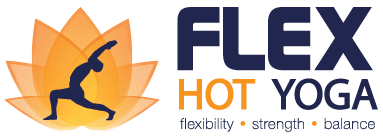Posture of the month: Vasisthasana
The wisdom of the sages
In February, we dedicate our focus to Vasisthasana - the Side Plank. Its Sanskrit name is composed of Vasistha (meaning ‘excellent’ or ‘the best’, also the name of a great Vedic sage and teacher of Lord Rama) and Asana (seat or posture).
Keep reading to find out about the benefits of practicing Side Plank and its variations, and what makes Vasistha one of the greatest sages in Indian history.
The benefits of practicing Vasisthasana
Whilst the basic version of the Side Plank looks rather simple and achievable, its variations can be very challenging. So take your pick of difficulty level and let’s progress from there…
Vasisthasana strengthens your wrists and arms
It strengthens your back, especially the quadratus lumborum muscle in the lower back, a deep spinal stabilising muscle
Allows you to target and train your obliques
Helps build core strength and stability
Improves your sense of balance and, in doing so, helps improve focus and concentration
If you practice with your top leg up, it stretches your hamstrings and adductors
Some studies suggest that it can help significantly improve scoliosis
As a chest opener, it assists in opening the anahata (heart) chakra and invites receptivity to love, balance and inner peace
It is also said to help open the manipura (solar plexus) chakra, associated with self-esteem, transformation, decisiveness and confidence
The story of sage Vasistha
In Vedic literature, Vasistha is known to be one of seven sons Lord Brahma birthed from his mind. They are also known as the star constellation ‘Pleijades’, and Vasistha is said to be the brightest of them, created to establish the path of enlightenment and knowledge for the people on earth.
There are many stories about Vasistha’s own journey to enlightenment. Yet most of his fame was reached when he became known as the teacher of King Rama, the main personality of the Indian epic Ramayana. Rama, an incarnation of Lord Vishnu, appeared on earth as the model of a perfect king, born to restore dharma (righteousness).
As Rama travelled the world at a young age, he witnessed pain, destruction and devastation, and fell into deep depression. As his teacher, Vasistha was able to support him in turning this sadness into a pivotal spiritual breakthrough. Their dialogue became known as the Vashista Yoga Samhita, a famous text in yogic philosophy about the nature of life, human suffering, free will and choice, human creative power and spiritual liberation.
Being in this world, but not of this world
Amongst many gems of wisdom, Vasistha taught Rama about the concept of jivanmukta, the state of liberation of the living soul: Jiva is the Sanskrit word for ‘individual soul’ (e.g. incarnated as a plant, animal or a human being); and mukti means liberation. Vasistha shared that the aim is to be liberated whilst alive and, thus, to “be in this world, but not of this world”. A jivanmukta soul has gained complete self-knowledge and is in full awareness of its connection to the Divine. It can therefore live in love and service, which is what Rama came to exemplify during his reign.
If you look at the yoga posture Vasisthasana, it is easy to see why it is associated with such a powerful name. To practice side plank, you have to find and maintain a careful balance - grounded yet reaching for the stars - and maintain an unwavering, crystal clear focus. Facing one direction, you may see a part of the whole truth. Yet when switching positions, another perspective comes to light.
So are you ready to practice Vasisthasana with us and improve your focus and balance? Then join us at Flex and practice regularly! There are over 25 classes/week, and we will practice Side Planks daily during all of February 2022!
Our gratitude for their insights this month goes to Yogaasan.com for insights and one of their images; and to Stephen from adventureyogaonline.com





